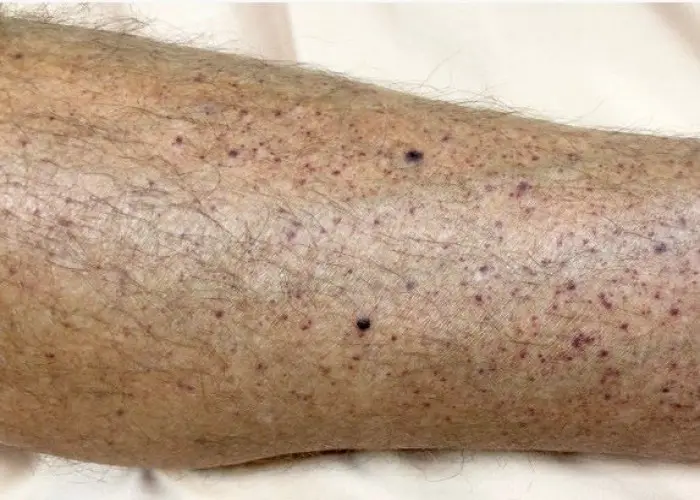 Welcome
Welcome
“May all be happy, may all be healed, may all be at peace and may no one ever suffer."
Hyperhidrosis

Hyperhidrosis is a medical condition characterized by excessive sweating that is not related to physical activity or heat. It can affect any part of the body, but most commonly affects the palms of the hands, soles of the feet, and underarms.
Primary hyperhidrosis is a form of condition in which the cause is not known, while secondary hyperhidrosis is caused by an underlying medical condition, such as an infection, thyroid disorder, or menopause.
Symptoms of hyperhidrosis can vary but may include visible sweating, clammy or wet palms or feet, and discomfort or embarrassment in social situations. It can also lead to skin irritation and infections.
Treatment options for hyperhidrosis include antiperspirants, medications, iontophoresis, and surgery. Antiperspirants are typically the first line of treatment and can be applied to the affected areas. Medications such as anticholinergics or beta-blockers may be prescribed to reduce sweating. Iontophoresis is a procedure in which a medical device delivers a low-level electrical current to the affected area to reduce sweating. Surgery, such as a sympathectomy, can also be performed to disrupt the nerve signals that stimulate sweating.
If you are experiencing symptoms of hyperhidrosis, it is important to speak with a healthcare provider for an accurate diagnosis and appropriate treatment. Hyperhidrosis can be a chronic and embarrassing condition, but there are effective treatment options available to manage symptoms and improve quality of life.
Research Papers
Disease Signs and Symptoms
- Excessive sweat
- Night sweats
Disease Causes
Hyperhidrosis
Sweating is your body's mechanism to cool itself. Your nervous system automatically triggers your sweat glands when your body temperature rises. Sweating also normally occurs, especially on your palms, when you're nervous.
The most common form of hyperhidrosis is called primary focal (essential) hyperhidrosis. With this type, the nerves responsible for signaling your sweat glands become overactive, even though they haven't been triggered by physical activity or a rise in temperature. With stress or nervousness, the problem becomes even worse. This type usually affects your palms and soles and sometimes your face.
There is no medical cause for this type of hyperhidrosis. It may have a hereditary component, because it sometimes runs in families.
Secondary hyperhidrosis occurs when excess sweating is due to a medical condition. It's the less common type. It's more likely to cause sweating all over your body. Conditions that may lead to heavy sweating include:
- Diabetes
- Menopause hot flashes
- Thyroid problems
- Low blood sugar
- Some types of cancer
- Heart attack
- Nervous system disorders
- Infections
Certain medications also can lead to heavy sweating, as can opioid withdrawal.
Disease Prevents
Disease Treatments
If an underlying medical condition is contributing to the problem, that condition will be treated first. If no clear cause can be found, treatment focuses on controlling excessive sweating. Sometimes you may need to try a combination of treatments. And even if your sweating improves after treatment, it may recur.
Medications
Drugs used to treat hyperhidrosis include:
- Prescription antiperspirant. Your doctor may prescribe an antiperspirant with aluminum chloride (Drysol, Xerac Ac). This product can cause skin and eye irritation. It's usually applied to the affected skin before you go to bed. Then you wash the product off when you get up, taking care to not get any in your eyes. If your skin becomes irritated, hydrocortisone cream might help.
- Prescription creams. A prescription cream that contains glycopyrrolate may help hyperhidrosis that affects the face and head.
- Nerve-blocking medications. Some oral medications block the chemicals that permit certain nerves to communicate with each other. This can reduce sweating in some people. Possible side effects include dry mouth, blurred vision and bladder problems.
- Antidepressants. Some medications used for depression can also decrease sweating. In addition, they may help decrease the anxiety that worsens the hyperhidrosis.
- Botulinum toxin injections. Treatment with botulinum toxin (Botox, Myobloc, others) temporarily blocks the nerves that cause sweating. Your skin will be iced or anesthetized first. Each affected area of your body will need several injections. The effects last six to 12 months, and then the treatment needs to be repeated. This treatment can be painful, and some people experience temporary muscle weakness in the treated area.
Surgical and other procedures
Other hyperhidrosis treatments include:
- Microwave therapy. With this therapy, a device that delivers microwave energy is used to destroy sweat glands. Treatments involve two 20- to 30-minute sessions, three months apart. Possible side effects are a change in skin sensation and some discomfort. This therapy may be expensive and not widely available.
- Sweat gland removal. If excessive sweating occurs just in your armpits, removing the sweat glands there may help. A minimally invasive technique called suction curettage may be an option, too, if you aren't responding to other treatments.
- Nerve surgery (sympathectomy). During this procedure, the surgeon cuts, burns or clamps the spinal nerves that control sweating in your hands. In some cases, this procedure triggers excessive sweating in other areas of your body (compensatory sweating). Surgery is generally not an option for isolated head and neck sweating. A variation on this procedure interrupts the nerve signals without removing the sympathetic nerve (sympathotomy).
Disease Diagnoses
Disease Allopathic Generics
Disease Ayurvedic Generics
Disease Homeopathic Generics
Disease yoga
Hyperhidrosis and Learn More about Diseases

Preterm labor

Heart failure

Ovarian hyperstimulation syndrome

Shellfish allergy

Immune thrombocytopenia (ITP)

Type 1 diabetes in children

Bronchitis

Muscle cramp
hyperhidrosis, হাইপারহাইড্রোসিস
To be happy, beautiful, healthy, wealthy, hale and long-lived stay with DM3S.
